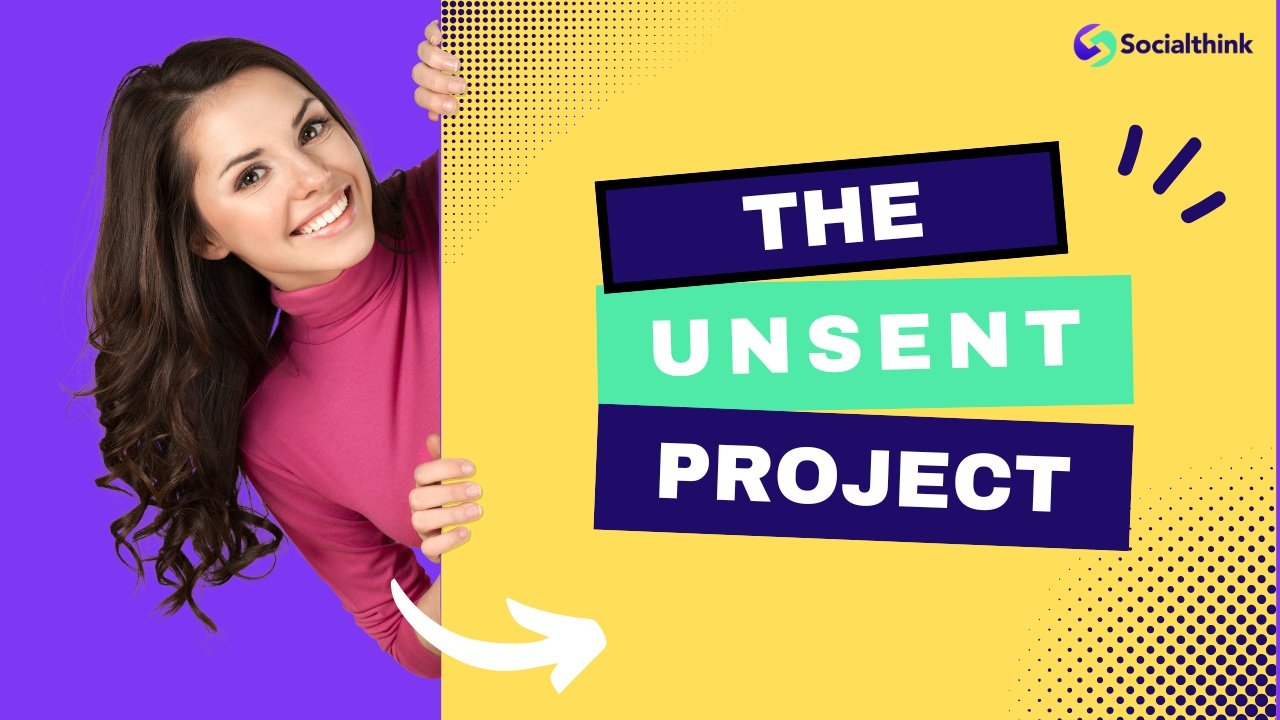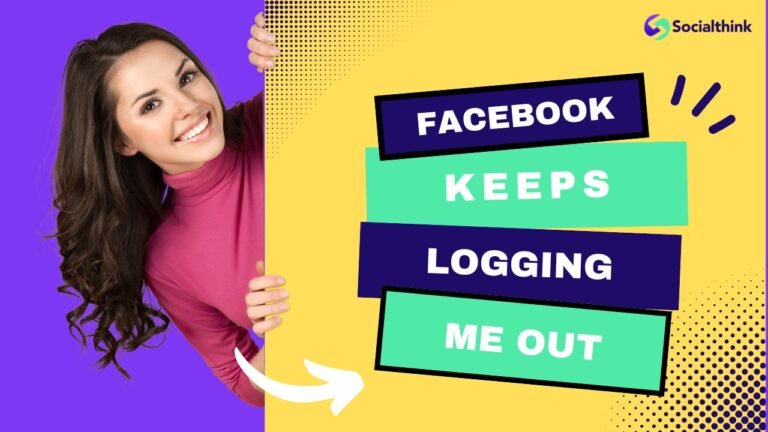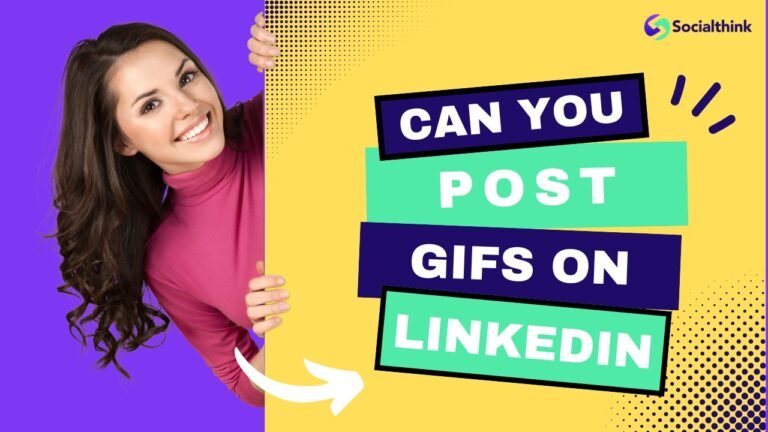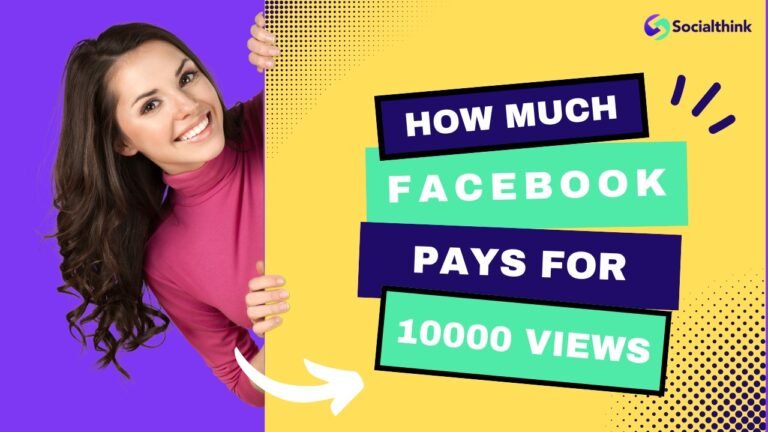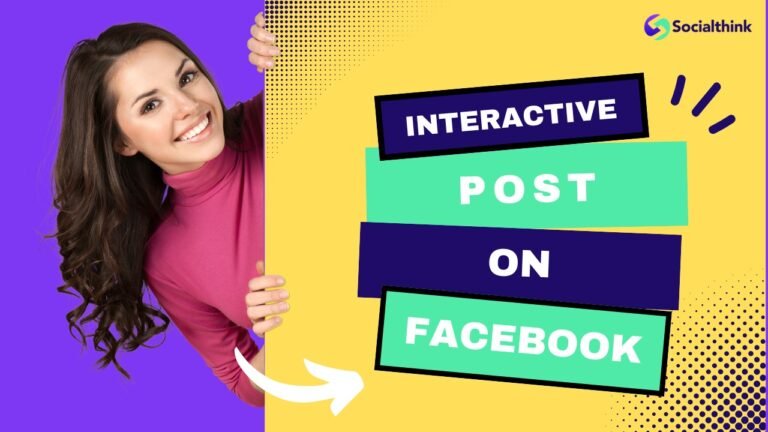The Unsent Project: Know Hidden Meaning in Unsent Conversations
Emotion drives connection in our digital world, and nothing captures this reality better than The Unsent Project – a unique platform where people share text messages they never sent.
At Social Think, we specialize in social media strategy, analytics, and actionable insights that help businesses harness the power of emotional connection online. The Unsent Project represents a fascinating intersection of social media, psychology, and human connection that businesses can learn from.
This comprehensive guide examines what The Unsent Project is, how it works, and why it matters to anyone interested in online emotional expression.
We’ll dive into its features, alternatives, and answer common questions, equipping you with a complete understanding of this unique platform.
What Is The Unsent Project?
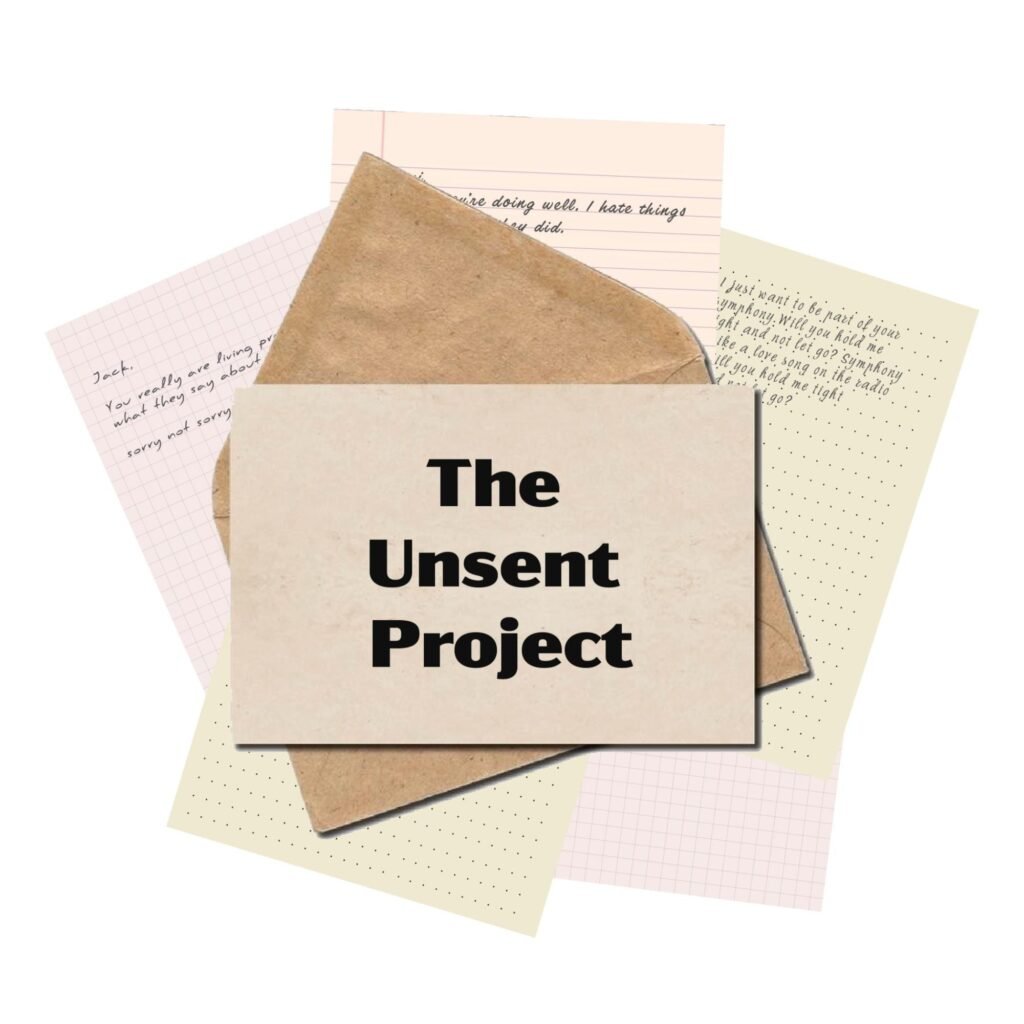
The Unsent Project stands as a remarkable collection of over 5 million unsent text messages to first loves, submitted anonymously by people worldwide.
Created by artist Rora Blue, this platform offers a unique space where individuals can share messages they drafted but never sent to significant people in their lives.
These unsent text messages capture raw emotions – regret, longing, gratitude, closure – that many feel but few express.
The project’s brilliance lies in its simplicity: participants submit their unsent messages, select a color they associate with the recipient, and add the recipient’s name.
These text messages then become part of a searchable online archive where others can find messages addressed to people sharing their name or browse by color.
The content of the submissions varies widely, covering nearly every human emotion imaginable. While “first love” serves as the project’s focal point, submissions encompass messages to former romantic partners, best friends, family members, and even pets.
The project creates a fascinating tapestry of human connection, showcasing how we attach color, emotion, and meaning to the people who touch our lives.
The Origin Of The Unsent Project Search
Rora Blue launched The Unsent Project in 2015 with a compelling question: what color do people see love in?
This artistic inquiry formed the foundation of what would grow into a massive archive of human emotion. Blue wanted to investigate how color connects to our emotional experiences, particularly our experiences of love and connection.
The project began modestly but quickly gained traction on social media as people discovered the therapeutic value of sharing their unsent text messages in a safe, anonymous environment. As submissions poured in, patterns emerged in how submitters associate colors with their messages, revealing fascinating insights into the visual language of emotion.
The Unsent Project search functionality evolved as the archive grew, allowing users to explore submissions by name or color.
This searchability transformed the project from a simple collection into an interactive experience where visitors could find messages that resonated with their own experiences.
The project’s growth demonstrates the universal need for emotional expression and the power of providing a platform where people can share their most vulnerable thoughts without fear of judgment.
Social Think recognizes the value in studying such platforms as they reveal important truths about how people connect emotionally online.
How The Unsent Message Project Works?
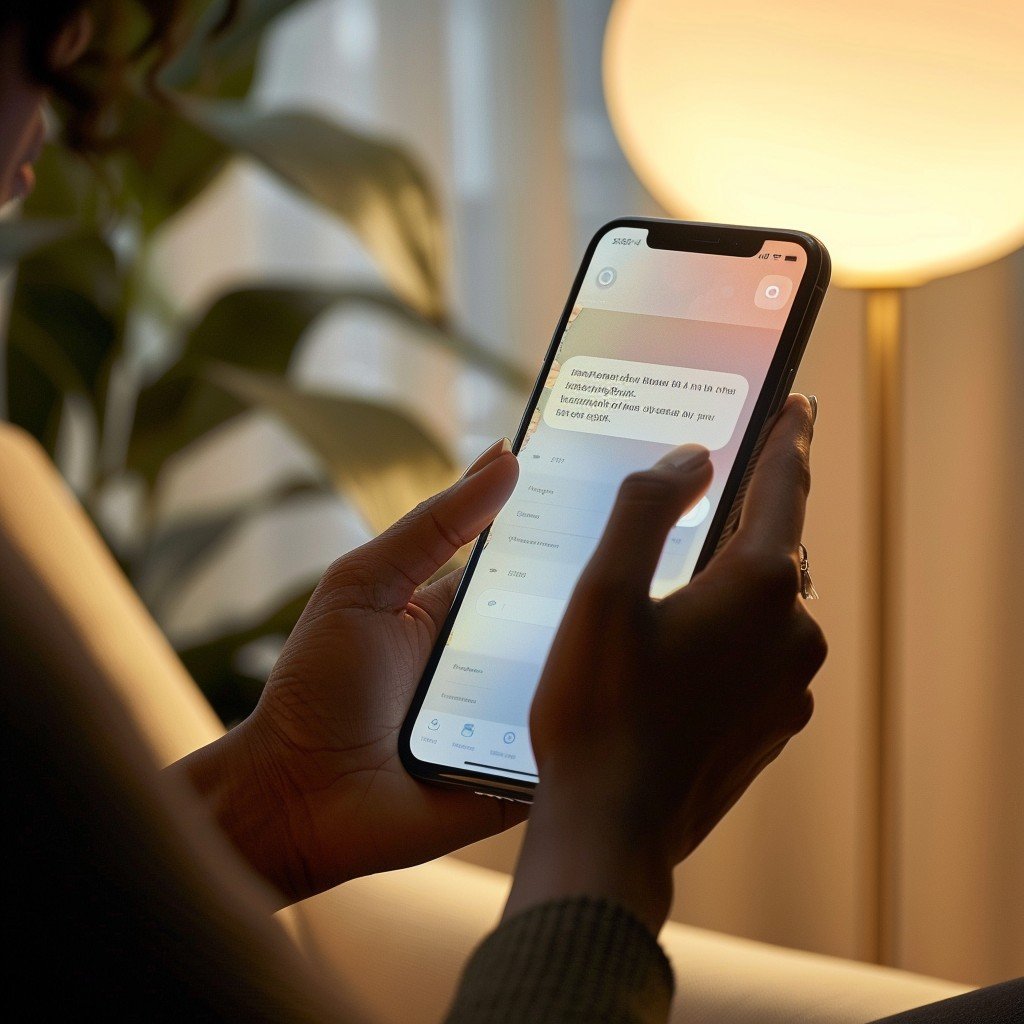
The Unsent Message Project operates through a streamlined process designed for simplicity and emotional impact.
Users visit the website and navigate to the submission form, where they enter three key elements: the unsent text message itself, the name of the intended recipient, and a color they associate with that person.
Once submitted, the message joins the online archive, categorized by both name and color.
This dual categorization allows for multiple ways to explore the content. When browsing the archive, users see each message displayed against its associated color background, creating a visual representation of the emotion behind the text.
The unsent message appears as a simple text bubble, reminiscent of a standard text message interface.
This familiar design element helps maintain the intimate feeling of these personal communications. No identifying information about the sender appears alongside the submission, ensuring complete anonymity for those sharing their unsent words.
The project maintains specific guidelines about content, prohibiting messages that contain explicit content, hate speech, or identifying personal information. This moderation helps maintain the project as a safe space for emotional expression rather than a platform for harassment or inappropriate content.
How To Use The Unsent Project?

Using The Unsent Project effectively requires understanding its simple but powerful interface.
First-time visitors to the site will notice the clean, minimalist design that puts the focus squarely on the content of the submissions.
To submit your unsent message, look for the “Submit” button, typically located in the navigation menu. The submission form requires three pieces of information: your unsent text message (limited to a reasonable length), the first name of the intended recipient, and the color you associate with this person. After completing these fields, submit your entry, and it will join the archive after moderation.
To explore existing messages, you have two primary options.
The search function at the top of the page allows you to enter a specific name to see all messages addressed to someone with that name. Alternatively, you can browse by color by selecting one of the color filters, allowing you to see messages associated with particular emotions.
When reading through submissions, remember that these represent real feelings from real people. The content of the submissions ranges from heartbreaking to joyful, angry to grateful.
Social Think recommends approaching The Unsent Project with an open mind and respect for the vulnerability displayed in these shared emotions.
The platform offers valuable lessons about authentic communication that can inform how businesses approach their social media strategy.
Is The Unsent Project Real?
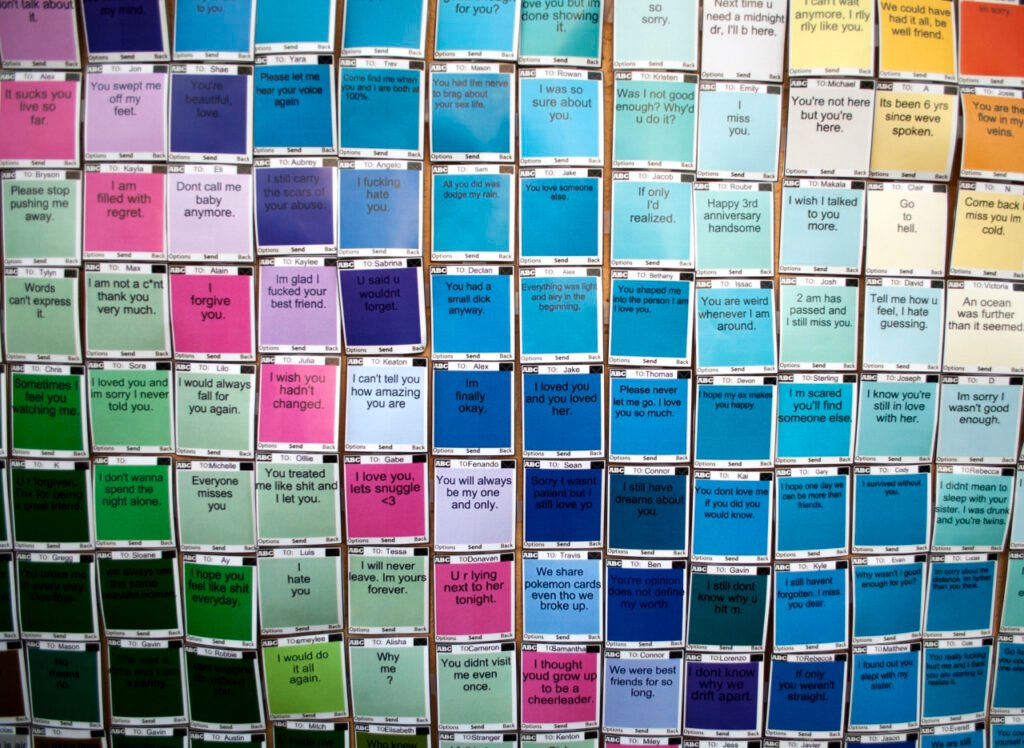
Yes, The Unsent Project is real and has been operating since 2015. This legitimate platform has collected millions of genuine unsent text messages from people worldwide.
Created by artist Rora Blue, the project has been featured in numerous media outlets and art exhibitions, confirming its authenticity.
The questions about the project’s legitimacy often stem from the emotional intensity of many submissions. Some messages contain such raw, powerful feelings that readers might wonder if they’re fictional.
However, the project’s strength lies precisely in this authentic emotional expression.
The consistent format, ongoing submissions, and dedicated maintenance of the online archive all point to a legitimate, well-established platform. Social media mentions and personal testimonials from users who have submitted to the project further validate its reality.
While individual submissions cannot be verified (due to their anonymous nature), the project as a whole represents a genuine artistic and social exploration of human emotion. For those questioning “is the unsent project real?” – the answer is a definitive yes, backed by years of consistent operation and millions of submissions.
Social Think’s analysis confirms that The Unsent Project represents an authentic platform for emotional expression, not unlike how effective social media strategies tap into genuine human connections rather than manufactured engagement.
Features Of Unsent Projects
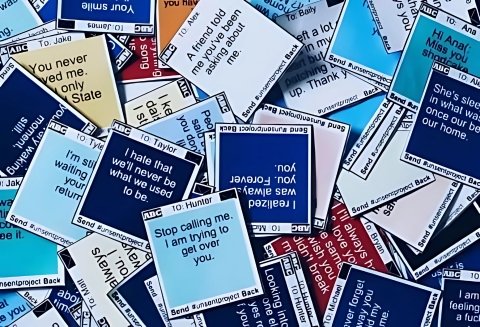
The Unsent Project stands out because of its special features that create a safe and heartfelt experience for users.
- Public Availability: The Unsent Project makes all submitted messages publicly available in its searchable online archive. This public nature creates a communal experience where shared emotions become part of a larger conversation about love, loss, and human connection. Anyone with internet access can browse the thousands of unsent text messages, creating a democratic platform where emotions are universally accessible.
- Complete Anonymity: One of the most important features of The Unsent Project is the complete anonymity it provides to submitters. No identifying information is collected or displayed alongside the messages. This anonymity creates a safe space where people feel comfortable sharing their most vulnerable thoughts without fear of recognition or judgment. The sender remains unknown, while their emotions become part of the collective experience.
- Associate The Color Of Love: The Unsent Project uniquely asks submitters to associate a color with each message. This feature stems from Rora Blue’s original question: What color do people see love in? The color selection adds a visual dimension to the emotional expression, creating patterns that reveal how people connect colors to feelings. This color association transforms text-based messages into a more multi-sensory emotional experience.
- Submit Upto 2 Unsent Messages Daily: To maintain quality and prevent spam, The Unsent Project limits users to submitting up to two unsent messages daily. This restriction helps ensure thoughtful contributions rather than impulsive flooding of the system. It also helps maintain the platform’s focus on meaningful emotional expression rather than casual communication.
- The Unsent Project Search: The search functionality forms a core feature of the online archive, allowing users to find specific types of messages. Visitors can search by name to find messages addressed to people sharing their name or the names of people they know. This feature transforms a massive archive into a personalized experience tailored to individual curiosity.
- Free To Use With No Registration: The Unsent Project remains completely free to use and requires no registration or account creation. This barrier-free approach maximizes accessibility and maintains the project’s focus on emotional expression rather than data collection. Anyone can submit or browse without paying fees or sharing personal information, making the platform truly inclusive.
- Multi-Device Compatibility: The platform works seamlessly across multiple devices, including desktops, tablets, and smartphones. This compatibility ensures that users can access and contribute to The Unsent Project regardless of their preferred device. Responsive design maintains functionality and visual appeal across different screen sizes.
- Secure and Safe: The Unsent Project prioritizes user safety through content moderation and secure data handling. Messages containing explicit content, hate speech, or identifying information face rejection during the moderation process. This commitment to safety creates an environment where emotional vulnerability thrives without leading to harm.
How Do You Search Your Name On The Unsent Project Archive?
Searching for your name on The Unsent Project archive follows a straightforward process that may yield fascinating results.
Begin by navigating to the project’s website and locating the search function at the top of the page. Type your first name (not your full name) into the search bar and initiate the search.
The system will display all messages addressed to someone with your name.
For those with common names, the results may include hundreds or even thousands of unsent text messages. Take your time scrolling through these messages, as they represent a diverse range of emotions and stories associated with your name.
Remember that these messages weren’t necessarily meant for you specifically – they’re addressed to anyone sharing your first name.
However, the experience of reading messages addressed to your name creates an interesting perspective shift, allowing you to see how others perceive and feel about people who share your name.
For a more refined search, you might consider combining your name search with a specific color filter. This combination narrows the results to messages addressed to people with your name that also carry specific emotional associations represented by the chosen color.
Social Think’s analysis reveals that many users find the name search feature particularly compelling, as it creates a pseudo-personal connection to anonymous content.
This demonstrates how personalization, even in its simplest form, dramatically increases engagement with online content.
Alternatives Of The Unsent Project
While The Unsent Project offers a unique platform for sharing unsent text messages, several alternatives exist for those seeking different ways to express unsent thoughts. These alternatives provide varied approaches to anonymous emotional sharing.
Space Email
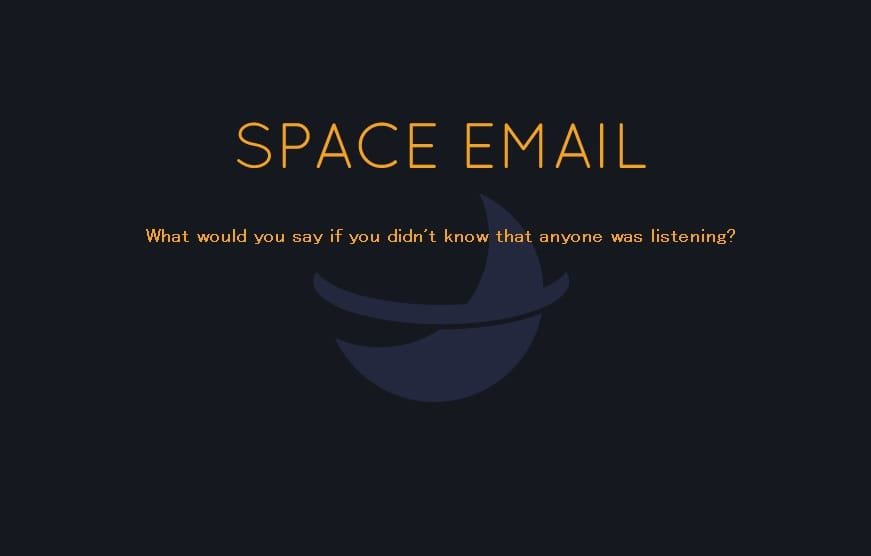
Space Email offers an intriguing alternative to The Unsent Project, focusing on messages that aren’t meant to reach a specific recipient at all.
Rather than archiving unsent text messages to real people, Space Email allows users to send messages into virtual space – a digital void where thoughts, feelings, and confessions exist without an intended reader.
Unlike The Unsent Project, which displays submissions publicly, Space Email emphasizes the act of release without the social aspect of sharing. Users type their messages directly on the site, and once “sent,” the message disappears into digital space without being stored in a searchable archive.
This platform appeals to those who want the catharsis of expressing their thoughts without even the anonymous public display that The Unsent Project offers. The focus remains on the therapeutic value of articulating feelings rather than contributing to a collective emotional archive.
After The Beep
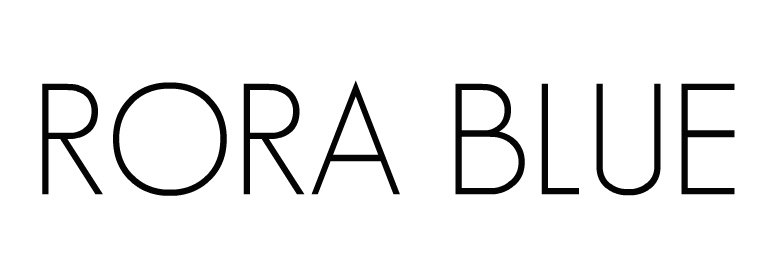
After The Beep, another creation by Rora Blue, takes the concept of unsent communication in a different direction by focusing on voicemails rather than text messages.
This platform allows users to record and submit voice messages they never left, creating an audio archive of unspoken words.
The audio format adds a layer of emotional depth through tone, pacing, and vocal quality that text alone cannot convey. Submitters record their messages through the website interface, and these recordings join an archive organized similarly to The Unsent Project.
Like its text-based counterpart, After The Beep maintains submitter anonymity while creating a public archive of emotional expression.
The voice recordings create a more intimate experience for both submitters and listeners, making it an interesting alternative for those who feel their emotions would be better expressed verbally than textually.
Social Think recognizes that these alternatives demonstrate the importance of offering multiple channels for emotional expression in digital spaces – a principle that applies equally to effective social media strategy for businesses.
The Unsent Project Color Meaning
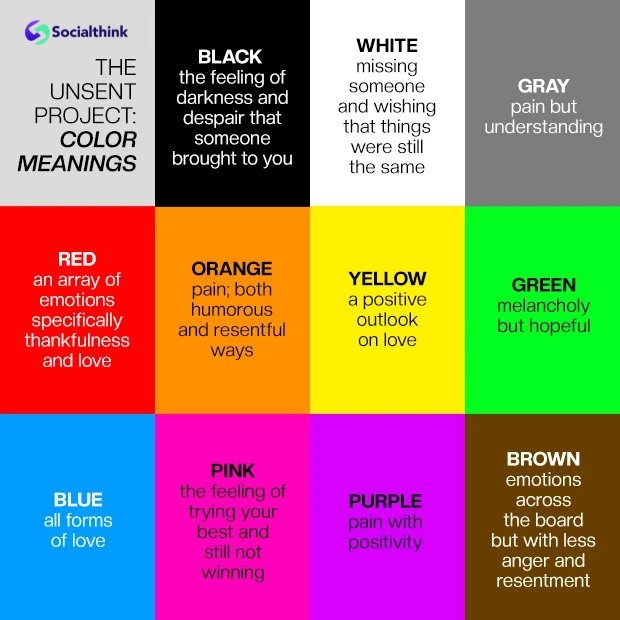
The color selection in The Unsent Project isn’t arbitrary – it represents a fascinating exploration of color psychology and emotional association. Each color carries specific emotional connotations that add depth to the unsent text messages.
Here’s what each color typically signifies within the project:
- Black: Black in The Unsent Project often represents intensity, finality, or sometimes negativity. Messages displayed on black backgrounds frequently express deep pain, unresolved grief, or powerful anger. Submitters who associate their recipient with black may be processing feelings of loss, betrayal, or profound transformation. The starkness of black serves as a powerful backdrop for messages dealing with endings or difficult emotions.
- White: White commonly signifies purity, emptiness, or new beginnings in The Unsent Project. Text messages on white backgrounds often express wishes for clean slates, forgiveness, or innocence lost. The color choice may reflect the sender’s desire for simplicity or clarity in a relationship that became complicated. White also sometimes represents what could have been – potential unrealized.
- Gray: Gray in the project typically represents ambivalence, uncertainty, or emotional neutrality. Unsent messages displayed on gray backgrounds often come from submitters who feel conflicted about their feelings or who have reached a place of emotional distance from the recipient. The color choice may indicate that the sender exists in an emotional middle ground regarding the person – neither intensely positive nor negative.
- Red: Red is predictably associates with passion, love, anger, or intensity in The Unsent Project. Messages against red backgrounds often express strong emotions – both positive and negative. The submitter associates this color when feelings that run hot, whether that’s romantic desire, frustration, or deep connection. Red messages tend to be among the most emotionally charged in the archive.
- Orange: Orange often represents energy, enthusiasm, or caution in the project. Text messages displayed on orange backgrounds frequently express messages about change, transition, or warning. Submitters who choose orange may feel a mix of optimism and hesitation regarding the recipient, or they might associate the person with warmth and creativity.
- Yellow: Yellow in The Unsent Project typically signifies hope, happiness, or sometimes caution. Messages against yellow backgrounds often express optimism, cherished memories, or warnings unheeded. The submitter choosing yellow might associate their recipient with light, joy, or the brightness they brought into their life – even if that brightness has dimmed.
- Green: Green represents growth, renewal, or sometimes envy in the project. Unsent text messages on green backgrounds frequently discuss personal development, healing, or jealousy. Submitters associating their recipient with green might be acknowledging how the relationship helped them grow or expressing complex feelings about seeing the person move forward without them.
- Blue: Blue commonly signifies calmness, sadness, or stability in The Unsent Project. Messages against blue backgrounds often express melancholy, peaceful acceptance, or desires for reliability. The submitter choosing blue might associate their recipient with tranquility, emotional depth, or the “blues” of longing and loss.
- Pink: Pink in the project typically represents tenderness, romance, or vulnerability. Text messages on pink backgrounds often express sweet sentiments, gentle reminiscence, or innocent love. Submitters who choose pink frequently associate their recipient with soft feelings, affection, or youthful romantic experiences.
- Purple: Purple represents uniqueness, mystery, or transformation in The Unsent Project. Messages against purple backgrounds often express admiration for someone’s distinctive qualities, confusion about mystifying behavior, or recognition of profound change. The submitter choosing purple might see their recipient as someone who defies categorization or who helped transform their life in meaningful ways.
- Brown: Brown signifies stability, earthiness, or sometimes stagnation in the project. Unsent messages on brown backgrounds frequently discuss reliability, comfort, or feeling stuck. Submitters who associate their recipient with brown might value the grounding influence this person had or feel that the relationship became too predictable or confining.
Social Think’s analysis of these color meanings reveals how visual elements enhance emotional expression online – a principle that applies directly to effective social media content creation.
FAQ’s:
What Inspired The Creation Of The Unsent Project?
The Unsent Project was created by artist Rora Blue in 2015 to explore how people associate colors with love. It became an online archive where submitters share unsent text messages to first loves, combining art with emotional expression.
Is The Unsent Project Tool Safe To Use?
Yes, it’s safe. The platform ensures complete anonymity, requires no registration, and moderates submissions to filter out explicit content or hate speech. Users should avoid including personal details in their unsent messages.
How Can Someone Submit Their Unsent Message?
Visit the website, click “Submit,” and fill in your unsent text message, the recipient’s first name, and a color you associate with them. You can submit up to two messages daily, which are moderated before appearing in the archive.
Is There A Way To Interact Or Respond To Messages?
No, The Unsent Project is a one-way archive. Submissions are shared anonymously, and there’s no option to reply or interact with the sender or the message.
How Long Does It Take For The Unsent Project To Send?
Submissions are reviewed and added to the archive within 24-48 hours. There’s no notification system, so users need to check the archive themselves.
How Many Messages Can I Share On This Unsent Message Project?
You can submit up to two unsent text messages per day. This limit ensures thoughtful contributions and prevents spam while keeping the archive meaningful.
How Does The Unsent Project Maintain Anonymity and Privacy?
The platform collects no personal information—only your message, recipient’s first name, and color choice. Moderation ensures privacy by removing explicit content or identifying details, creating a safe space for emotional sharing.
Conclusion
The Unsent Project showcases the universal need for emotional expression through millions of unsent text messages, revealing the depth of human relationships. This platform’s success highlights the power of anonymity, accessibility, and emotional resonance in creating meaningful digital experiences. Businesses can learn valuable lessons about genuine emotional engagement from this project.
At Social Think, we assist companies in applying these insights to their social media strategies, fostering authentic connections. The project’s use of color psychology enhances textual communication, showcasing innovative content creation for social media. Whether you’re sharing an unsent message or exploring related projects like Space Email or After The Beep, you’re engaging in a profound exploration of human connection in the digital era.
For assistance in creating authentic audience engagement, reach out to Social Think for expert guidance on leveraging data-driven insights and innovative approaches to online communication.

